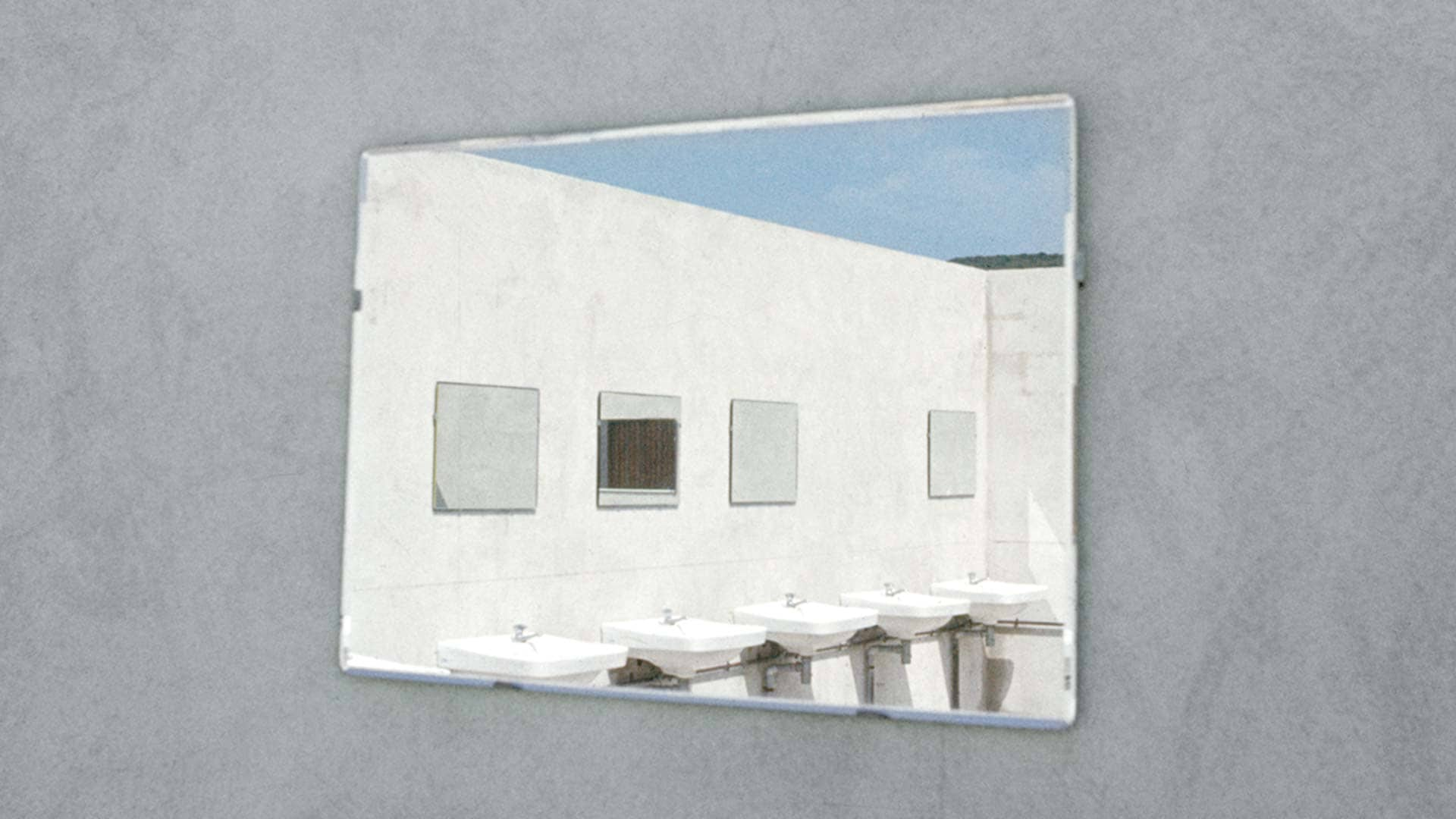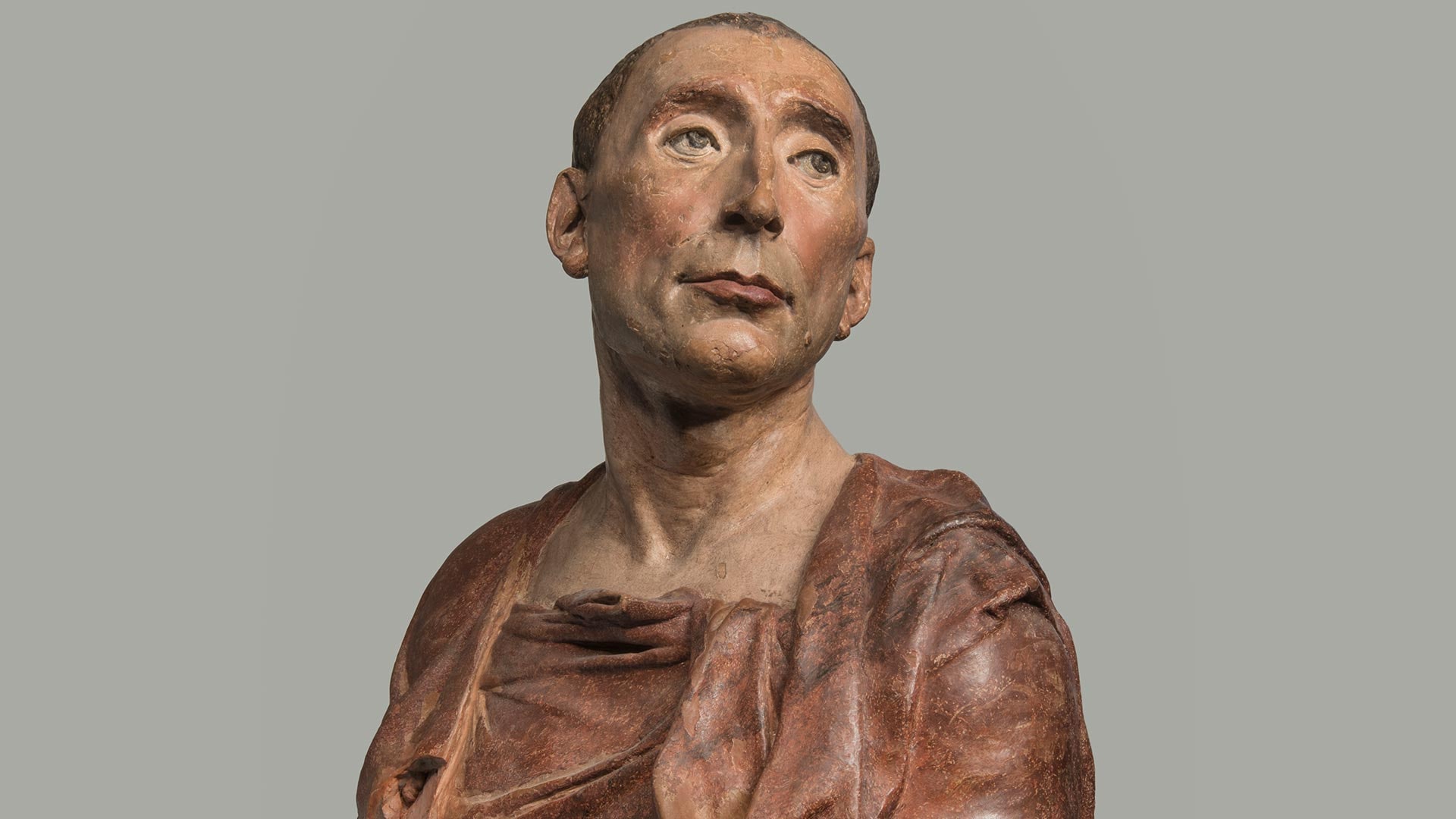Not long ago, there was a fire in my father’s house in Mexico City. It started in the furnace room, with a gas leak from the boiler. The flames quickly spread to the garage, across boxes full of books and family archives, sparing my old bicycle—unused since I rode it one last early morning to my final exams at the university—but melting all the car’s plastic parts and shattering all its windows. A couple of days after the fire, when the shock had passed, and the inventorying of losses was done, and the time had come to allow some fresh air and some humor to pass through it all, my father sent me pictures of the damage. In one picture, the remains of a map of Mexico hang above the debris on a soot-covered wall, looking like an amateur metaphor of the country in its current circumstances. I remembered that map. I grew up in houses full of maps like it. The U.S.S.R. occupied an entire wall in the house where I was born. In another house, there were atlases and road maps on every horizontal-enough surface: kitchen countertop, sofa, toilet-tank lid. Later, a collection of terrestrial globes grew, and jigsaw puzzles of world maps were routinely handed out as birthday or Christmas presents. For some years, at dinnertime, verbalized maps filled the otherwise empty space of our conversations, and my siblings and I were not allowed to take leave from the table unless we were able to pass my father’s geography quiz, providing three correct answers in a row: The capital of Burkina Faso? Ouagadougou. Suriname? Paramaribo. Mongolia? This last one, I always fucked up. A new series of maps slowly appeared. It was 1994, and we had just moved to Pretoria, South Africa. My father began working on a Ph.D. thesis about the urban history and future of Mexico City, and for months, he tacked or taped cartographic representations of the city along the walls of his studio. Some were geologic maps of the kind only specialists can read. Others were historical, and these my father organized chronologically, from the foundation of Tenochtitlán in 1325 to the late-twentieth-century D.F. There were facsimiles of an imagined, hand-drawn pre-Hispanic city, such as the 1542 Codex Mendoza, a sort of visual synthesis of the mythical and the historical foundations of the Aztec empire, at the center of which was an eagle, standing on a nopal cactus, eating a serpent. There were also facsimiles of the first European representations of the colonial capital, which perhaps attempted to impose spatial notions of “center” and “periphery” on the complex, possibly untranslatable urban layout of the Aztecs’ floating capital—a city erected on an island within a basin curving up toward high mountain ranges from where rivers flowed down into five different lakes, all connected by an intricate system of canals, chinampas, bridges, and causeways. And, finally, there were many maps of the postcolonial city, showing a grid that rapidly expanded across the basin, successively reproducing layouts imported from Spanish, then French, then American urban-planning models. Mexico City has often been described as a sort of palimpsest. It’s a rather generic idea—an accurate-enough description of most cities, inasmuch as substrates of a city’s past can be read in its current appearance. But it’s perhaps particularly true of Mexico City, where the practice of repurposing ruins has been the rule and not the exception: the stones of Aztec ruins were used to build the first colonial buildings, and the ruins of those to build the neocolonial ones. The walls and façades of the older buildings, especially institutional ones, can be read as a brick-and-stone archive of the intense, decade-long debates that took place in Mexico City around an official architectural language that had to be established as its own singular style. Beyond the city’s architectural languages, the earthquakes that have struck still reverberate visually in all the cracks that scar its schools and houses; and the city’s lacustrine substrates have left all kinds of humid traces: floodmarks on walls, churches half sunk, plazas paved with mold-clad slabs, sidewalks that resemble solidified waves. The Palacio de Bellas Artes (Palace of Fine Arts) is perhaps the structure that tells this layered story best. No other building still standing is as much a depository of the hydrologic and topographic determinants of the city. No other institutional building is as much an archive of the ideological battles and power struggles between social classes, successive governments, and different architectural schools. Bellas Artes was inaugurated in 1934, but its construction began in 1904, during the final years of the Porfiriato—the almost four-decade dictatorship headed by Porfirio Díaz, which ended with the Mexican Revolution, in 1910. One of the recurrent debates during the early Porfiriato was whether modernizing Mexico City meant reconstructing the colonial capital in the style of European neoclassical architecture, rooted in Europe’s Hellenic heritage, or whether Mexico City had to rebrand itself in a neo-Aztec visual code, rooting the narrative of its past in precolonial history. Opinions were polarized, and, on some occasions, opposing visions were reconciled—with unfortunate results. The Mexican pavilion for the 1889 Exposition Universelle in Paris, for example, was the conciliatory and hideous Palacio Azteca. The pavilion looked like the result of a one-night stand between the National Gallery in London and the Pyramid of the Sun in Teotihuacán. In the end, experiments with neo-Aztec architecture were abandoned, and Mexico City’s official nineteenth-century style aligned with Beaux Arts, a late form of European neoclassicism—perhaps because Beaux Arts was more resonant with universalist aspirations, at a time when Europe was still the undisputed owner of the universal. It’s easy to wonder, though, what Mexico City would look like—what it would feel like—if the proponents of the neo-Aztec had prevailed. Mexican bureaucrats would have to climb almost vertical stairs on their way to government offices, and presidential addresses would be delivered from the high platform of a neo-pyramid. In any case, modernizing Mexico in the Porfiriato became synonymous with building in the style of Beaux Arts, and the Palacio de Bellas Artes, originally named Teatro Nacional, became the most emblematic and perhaps most ambitious project of the Díaz regime. During this period, foreign architects and engineers, mostly importing materials from abroad, were in charge of building turn-of-the-century Mexico City. Díaz’s favorite architect was the Italian-born Adamo Boari, who had graduated as an engineer in Bologna, later traveled to Montevideo, Buenos Aires, New York, and Chicago, and finally settled in Mexico in 1899. Boari received the commission for the Teatro Nacional, which Díaz conceived of as the space that would “import” European ballet, music, and opera for an educated upper class eager to remain in touch with the old continent’s trends and traditions. The theater itself also had to be an emblem of progress, “exporting” an idea of a Mexican modernity. It had to be as sophisticated and magnificent as the best opera houses in Europe. The site for the new theater had been occupied by a convent, Santa Isabel, opened in 1601, which had been built on the muddy grounds of the old Tenochtitlán lake bed and so over the years had constantly flooded and sunk. In 1861, following the Reform wars led by Benito Juárez, in which the government expropriated all ecclesiastical properties, the convent closed. The twenty-four nuns who still lived there were relocated, and the building was repurposed as a mixed-use complex. Its central area became a cigarette and cigar factory; what had once been the church became a printing press; the nuns’ dormitories became housing for single mothers; classrooms became the offices of the first Mexican telephone company, the Central Telefónica; and in what was maybe the old canteen, a rehearsal space for the French Philharmonic Society was improvised. Then, in 1901, everything was razed. Boari’s project was a sort of anthem to—or perhaps an unwitting requiem for—Art Nouveau. In his original plan, the theater was to be made of marble, mostly imported from Carrara, cladding a steel skeleton that was to be at least as large as a Byzantine basilica. Four marble statues of Pegasus would crown the structure, and a number of Doric columns and allegorical sculptures would decorate the exterior. Inside, there would be a complex system of electric lighting, large halls for people to meet and mingle with “the stars,” three grand domes to admit Mexico City’s intense altiplano sunlight, and even a garden. Boari’s plan, however, turned out to be utterly dysfunctional. The theater was not exempt from the constant sinking that Santa Isabel and the later multipurpose complex had had to endure. In the course of a few years, the “white elephant,” as it was often called, sank ever deeper into the ground. Repeatedly, entire parts of it collapsed and workers had to start all over again. In 1910, the Dirección de Obras del Teatro came up with the idea of injecting concrete (Portland cement) into the substrates of the building in order to keep it from sinking. This was successful enough, but later that year the Mexican Revolution broke out. Funds became scarcer, materials and supplies more difficult to obtain, and the construction of the theater slowed down. Boari had to redraft and redraft his plans, simplifying his designs and relinquishing his high aspirations to the reality on the ground. By 1916, violence and chaos had spread on all sides of the country and besieged the city. Boari decided to return to Italy. In the years that followed, he continued to draw new plans for his theater, which he sent to Mexico, hoping to hear back. He never did, and none of his plans materialized. He died in Rome, in 1928. The Mexican Revolution was an agrarian-led insurgence against the Porfirio Díaz dictatorship and the tight grip that the aristocracy had on the country. The construction of the Teatro Nacional, an emblem of bourgeois and aristocratic values and aspirations, now halted completely. It was as if something deep in the sediment of the lake repelled all the imported marble, iron, and concrete; as if something deep in the land’s memory repelled the idea of having to house European ballets and operas. For years the building’s metal frame lay like the gigantic rib cage of yet one more decomposing skeleton in a death-stricken city. During that time, the Italian engineer Raymundo Frola, who had been brought to Mexico by Boari to work on the machinery for the theater, and the Mexican carpenter Simón Maldonado decided to occupy what was supposed to become the theater’s machine room. For some time, they both lived there, among the ruins, ropes, tools, and mountains of marble and stone debris. Slowly, cats, rats, and—especially—owls took over. Hundreds and hundreds of owls. Frola and Maldonado were either driven out by the owls or interred in the rubble during one of the building’s many collapses. Twenty years went by before construction restarted. The revolution had passed, and the country was reimagining itself. The debates around Mexico City’s architecture that had begun in the Porfiriato now focused on the possible integration of the country’s many pasts, peoples, and social classes. The plans for construction of the theater were taken up again in 1930, within a very different paradigm of modernity. The new, revolutionary government determined that the building should not have the sole function of entertaining the bourgeoisie but had to be a multipurpose space for the education of “the masses.” The new construction plans were directed by the Mexican architect Federico Mariscal, a proponent of the neocolonial style who opposed European neoclassical architecture. Mariscal partly respected the surviving exteriors of the theater but completely redesigned its interiors. The new language he used was Art Deco—a peculiar, vernacular form of it, in any case. The areas of the building that still lacked cladding were covered with thin slabs of local marble and stone—instead of Carrara marble—and its metal skeleton was covered with concrete, copper, and porcelain. Instead of Greek gods and Muses, masks of the Mayan rain god Chaac were placed at strategic points along the walls. Then Mexico’s “three giants,” Diego Rivera, José Clemente Orozco, and David Alfaro Siqueiros, were each commissioned to do a mural that depicted scenes of the Mexican Revolution. Finally, in 1934, the Teatro Nacional was rebaptized and inaugurated as the Palacio de Bellas Artes. Since then, Bellas Artes has been described as a horrid collage, a mausoleum, a gargantuan catastrophe. In her 1932 tourist guide to Mexico City, Your Mexican Holiday, the American journalist and anthropologist Anita Brenner referred to it as “the most pretentious building of all.” The New York–based dancer and choreographer José Limón, who was invited to Bellas Artes as resident choreographer in the 1950s, called it “monstrous and fascinating” and “possibly the ugliest thing I was to see in Mexico.” In her 1985 novel Arráncame la vida, Ángeles Mastretta described Bellas Artes as a “first communion cake.” Today, Bellas Artes is a space for concerts, theater, dance, art exhibitions, book launches. It’s as institutional and solemn as any public building. It’s also just a place where people meet, because—because it is a place. In high school, I had a poète maudit boyfriend—a little chubby, very maudit, and not so poète—with whom I spoke little but played a lot of chess and danced danzón. We’d meet in front of Bellas Artes, play a game of chess, then walk over to the Alameda, the adjacent park, where Mexico City octogenarians gather on weekends for a dance. He would tell me over the phone the night before: See you tomorrow in front of the Vestido de Quinceañera (the quinceañera dress). I remember spending long Sunday afternoons in my father’s studio in Pretoria, in the early 1990s. While he made notes and sketched plans for his thesis, I drew or wrote, looking up now and then at his wall maps of Mexico City. Maps are synthetic abstractions of external space and interior space—a document both of what is seen and of how a mind sees it. But, perhaps because their abstraction supersedes their subjectivity, they do not impose a single definite narrative on the space they represent. For my father, those maps were the silent companions with which he held the solitary but always impassioned debates that marked his lifelong obsession with designing an urban plan for Mexico City that would recover all its lakes and rivers: a future city that “floated”—the way Tenochtitlán had. The cartographic archive on his walls was a window into the city where I had been born but not yet lived in. What they offered me, in hours of ennui and preadolescent melancholia, was not a key to understanding the abstract geopolitical changes in a landscape but the beginning of a wondering, of a fathoming, of an insistent question: What story or stories could possibly tie all those maps together? Each drawn as if in a different language, in diverging scales and proportions—it was hard for me to see how they could all represent the same place. The landscape across which Mexico City expanded between the fourteenth and twentieth centuries had changed beyond recognition: a precolonial monad surrounded by a lake that had disfigured into a massive modern amoeba surrounded by an industrial, cancerous sprawl. Looking back, I understand that the thread that ran across the maps was water. The story they told was about the disappearance of a vast waterscape—lakes and rivers progressively diked, dried up, tubed, banished—and the simultaneous emergence of an equally large cityscape, where horrible things replaced beautiful ones, but where improbable stories, like the one of Bellas Artes, were also possible. I don’t know if Bellas Artes is ugly, pretentious, monstrous, quinceañera-kitsch or what. It’s as megalomaniac a statement as London’s Big Ben or Agra’s Taj Mahal, as sad as an aging Marlene Dietrich, and as much an emblem of turn-of-the-century architectural flops as Kubrick’s Space Odyssey is of 1960s futuristic film flops. More than anything, though, Bellas Artes is a three-dimensional map of Mexico City. It’s a kind of hologram, or a Borgesian Aleph that contains, in its limited space, the entire history of the city’s many amphibian lives, real and imagined. If the story of Mexico City were an epic, it would be one of politics versus lakes, time versus rivers, mezcal versus morals, pulque versus progress, architecture versus water.
Cart
Size
Quantity
Shipping to the United States.
Apple Pay is now available as a payment option.
Subtotal (Tax Excl.)


